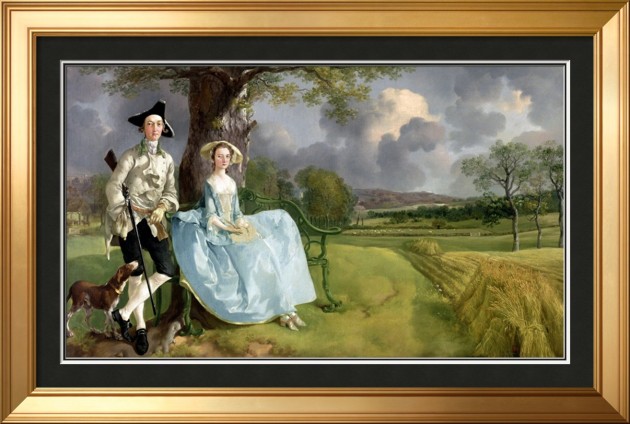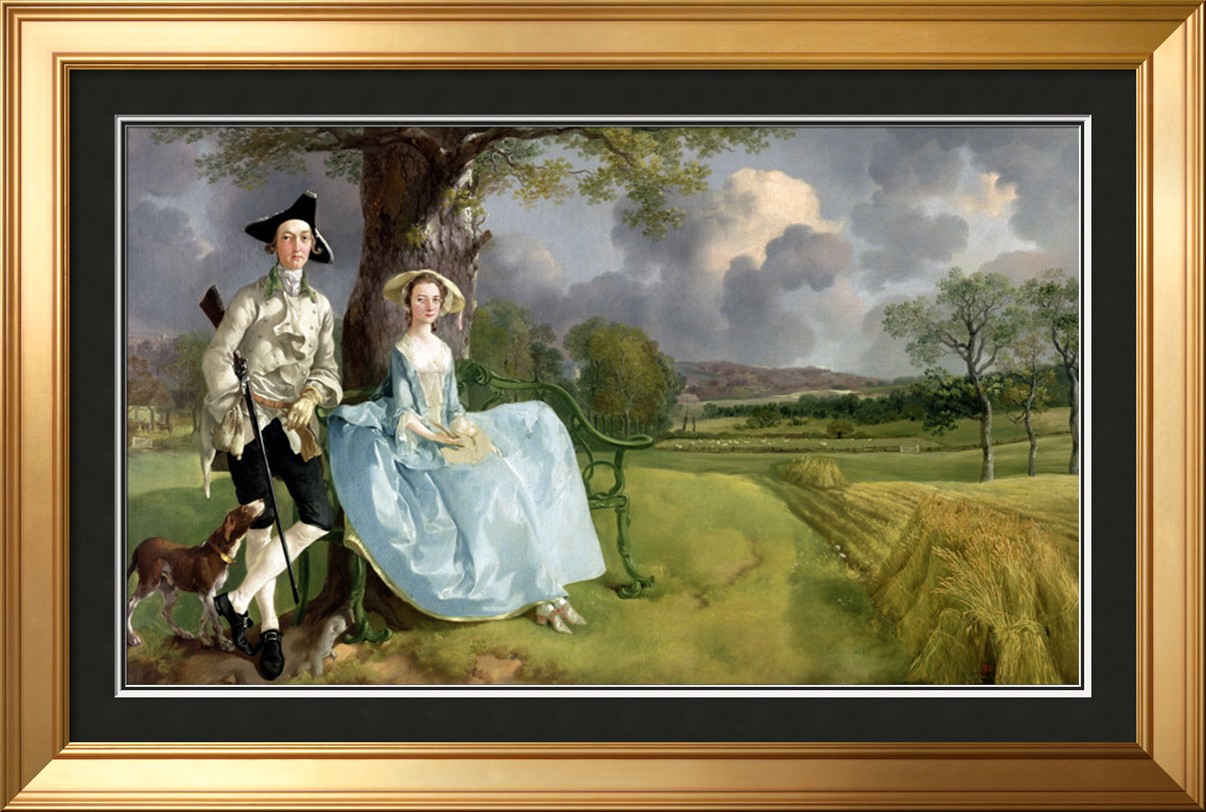There is a painting from 1750 by artist Thomas Gainsborough called Mr. and Mrs. Andrews. The original hangs in the National Gallery in London, England, where it has been held in collection for more than 50 years.

Mr. and Mrs. Andrews by Thomas Gainsborough
The painting depicts a man, Mr. Robert Andrews, and his wife, Frances Mary Carter. The two were promised to each other when Mr. Andrews was 15 or 16 years old and were married on November 10th, 1748; he was 22 years old, she was 16 years old. Far from being a purely romantic match-up, the marriage of Mr. and Mrs. Andrews was a business transaction. In a world before the widespread existence of corporations, you are essentially looking at Mr. and Mrs. Andrews, Inc.
[mainbodyad]The Andrew family was a member of the so-called landed gentry, meaning they were wealthy, often self-made, but didn’t have peerage, or a noble blood line. Historians believe that the bulk of the Andrews fortune came from real estate investments churning out gushers of rental income, but history has also uncovered that the father of the pictured Mr. Andrews made substantial high-interest loans to those in need of capital.
In fact, even the prince of Wales was £30,000 in debt to the elder Mr. Andrews; a substantial sum that would work out to £3.9 million today in inflation-adjusted terms, or roughly $6.1 million in the United States. Old man Andrews owned ships, traded with the colonies, and in an effort to help his son gain access to the upper class, bought an estate, arranged the marriage to Ms. Carter, and put in place the process by which he would take over the family business.
The bride’s family, on the other hand, had built a fortune in the drapery business. They were able to use the Andrews family fortune to protect their textile mills, preventing them from collapse. The painting depicts the Aubries estate, which historians believe was part of her dowry at marriage, becoming the property of her husband, the younger Mr. Andrews. The land bordered the bride’s father’s estate, known as Ballingdon. The woman’s lap remains unfinished, presumably so the artist could add a child in future years.
The reason I love the story of Mr. and Mrs. Anderson by Thomas Gainsborough is manifold.
- The elder Mr. Andrews had to look beyond his own lifetime and hope of enjoying his prosperity to build a better life for his children, grandchildren, and great-grandchildren. He executed a well-conceived plan to give his eight kids what they wanted, secure their place in society, and ensure they had the financial resources to enjoy life.
- Though not part of the peerage, even the royal family found was in debt to the shrewd Mr. Andrews, proving that in a meritocracy, merit does, in fact, tend to win over unfair factors such as heredity. There is a reason the Forbes list today is no longer dominated by DuPonts and Rockefellers.
- The oak tree that is depicted in the painting is still standing on the same ground. The fact that real people stood in that very spot centuries ago makes the story all the more real.
- The interesting changing sociological definition of marriage has evolved from what was essentially a joint stock corporation or partnership involving two people to a (presumably) monogamous life-long commitment between two people with the business functions being spun-off into things like limited partnerships, limited liability corporations, etc.
- The artist, Thomas Gainsborough, wanted to paint landscapes. He hated “painting faces”, as he put it. Yet, in order to feed himself, he had to give other people what they wanted, which meant painting portraits. The free market works most of the time.
- I’m fascinated by the elder Mr. Andrew’s desire to receive the approval of the upper classes, if not for himself, for his children. Arguably, it was a different time and things like family bloodlines still matter rather than the long-established new American, Indian, British, German, Japanese, Chinese, et al royalty of the self-made man a la Steve Jobs or Walt Disney. To borrow from the vernacular, everyone wants “street cred”. Today, that comes from your own accomplishments. Few care if your father runs Google or your grandfather helped found a publishing empire, people only want to know what you have done. That wasn’t the case in the time of Mr. and Mrs. Andrews; street cred came from breeding, much like show dogs or cats.
Every time I see the painting (I like the history behind it so much, I bought a framed copy for my house), I’m reminded of all of these things. It makes me think about the fact time will keep marching on long after I’m gone, that life on a cosmic scale is ephemeral, and that part of duty is to build the future for those who come after us, just as we have benefited from the generosity and foresight of our fathers and grandfathers. It’s such a great painting on so many levels, including my love of storm scenes, of which this was one of the first.
[mainbodyad]



